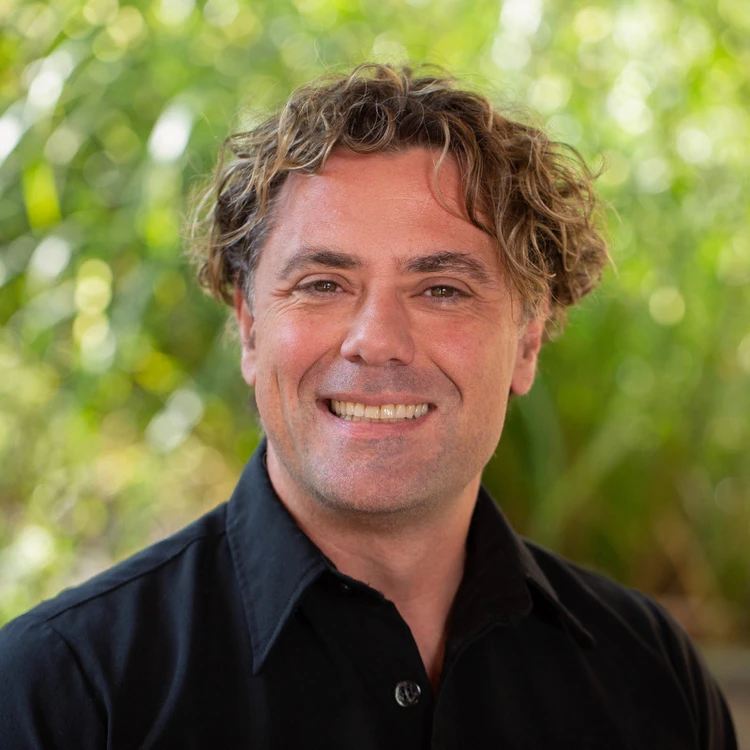Research
Understanding the evolution and environmental interaction of deep-sea hydrothermal microbiome on Earth can serve as a proxy to constrain the physiological and metabolic adaptations of microorganisms to life in extreme conditions.
Foustokos' innovative high-pressure microbiology techniques provide new avenues for studying metabolism in both pure cultures and natural deep-sea microbial communities under temperatures and pressures relevant to the seafloor and subseafloor environments. For example, in a recent study, they constrained the cycle of elemental sulfur through microbial metabolism, while microorganisms are growing at seafloor pressures.
Some of the key questions are: How do piezophiles adapt to pressure and chemical gradients present in deep-sea and subsurface environments? Which are the core cellular functions for pressure adaptation? Are those preserved as central and common functions among piezophiles?
In these studies, Dionysis and his team investigates the pressure/metabolic adaptation mechanisms of extremophiles associated with energy and carbon metabolism, membrane structure and competence by using a combination of gene and protein expression together with biochemical analyzes (e.g., biomass chemical/isotopic composition). Along with pure-culture studies, future work will include high-pressure incubations of diffuse-flow vent fluids delivered onboard oceanographic ships to isolate new microorganisms and to describe the physiology and function of natural mixed microbial communities. At the core of this effort is the integration of microbiological/molecular methods with (i) biochemistry; (ii) innovative experimental systems; (iii) thermodynamic modeling, and (iv) stable C-O-H-N isotope analysis.
Understanding the evolution and environmental interaction of the deep-sea hydrothermal microbiome on Earth can serve as a proxy to constrain the physiological and metabolic adaptations of microorganisms to the extreme for life conditions at primitive stages of planetary evolution.
At EPL, Foustokos integrates microbial physiology, metabolism, and functions with ecosystem engineering to understand the functions and evolution of habitable worlds under the general umbrella of H2-based extreme autotrophic biospheres. His hypothesis-driven investigations follow the life-cycle of bacteria that thrive in hydrogen-rich conditions from their interactions at their immediate habitats all the way into their co-evolution with atmospheres and oceans, by utilizing reservoirs of abiotic materials that are available on planets.
He uses laboratory observations, field studies at deep-sea hydrothermal vents, and geochemical modeling to link microbial ecosystems with planetary evolution. By focusing on H2-based metabolism, we expand the framework of microbial and planetary co-evolution as a more general mechanism for compositional change at the planetary level, both at other points in Earth’s history (e.g., Great Oxidation Event) and on other bodies. His studies aim to shed new light on what makes up a planet’s biosignature by better explaining the relationship between an initial abiotic composition of a planet and how the planet's atmosphere and composition is ultimately shaped by its microbial communities.
Foustoukos is a Science Team Member of the OSIRIS-REx mission supporting the isotopic/elemental geochemical investigations within the "Sample Elements and Isotopes" and "Sample Organic Analysis" working groups.
CV
- Ph.D. (Geology - minor in Chemistry), University of Minnesota, USA 2000-2005
- B.Sc. (Geology), Aristotle University of Thessaloniki, Greece 1993-1997
- 2006 Postdoctoral Fellowship - Geophysical Laboratory, Carnegie Institution of Washington
- 2004 Samuel Goldich Award - Department of Geology & Geophysics, University of Minnesota
- 2003 Francis Gibson Graduate Fellowship - Department of Geology & Geophysics, University of Minnesota
- 2002 John Gruner Fellowship - Department of Geology & Geophysics, University of Minnesota
- 1996 National Scholarship - Government of Greece (FIRST rank in the B.Sc. examination In Geology, Aristotle University of Thessaloniki)
- Kueter, N., Cody, G.D., Foustoukos, D.I., Mysen, B, O. (2022) Intramolecular hydrogen exchange inside silicate melts - the effect of deuterium concentration, Chemical Geology, 610, Article 121076
- Pérez-Rodríguez I., Sievert S., Fogel M. and Foustoukos D.I. (2022) Physiological and metabolic responses of chemosynthetic NO3- reducers to high hydrostatic pressure, Geobiology, doi: 10.1111/gbi.12522.
- Foustoukos, D.I. Alexander, C.M.O'D., Cody, G.D. (2021) H and N systematics in thermally altered chondritic insoluble organic matter: An experimental study. Geochimica et Cosmochimica Acta, 300, 44-64. doi.org/10.1016/j.gca.2021.01.021.
- Riebe, M., Foustoukos, D.I., Alexander, C’O, Steele, A., Cody, G.D. A, Mysen, B.O., Nittler, L. (2020) The effects of atmospheric entry heating on organic matter in interplanetary dust particles. Earth and Planetary Science Letters, 450, Article 116266, doi: 10.1016/j.epsl.2020.116266
- Foustoukos D.I. (2019) Hydrothermal oxidation of Os. Geochimica et Cosmochimica Acta, 255, 237-246
- 2009-present Research Scientist– Geophysical Lab, Carnegie Institution of Washington.
- 2010-present Adjunct Professor –Department of Atmospheric, Oceanic and Earth Sciences, George Mason University
Courses: GEO-364/GEO-500 Marine Geology, GEO-458/CHEM-458/EVPP-505, Chemical Oceanography, BIOL-435/CHEM-500/GEO-500/GEO-315 Biogeochemistry, GEOL-403/500 Geochemistry - 2013-2015 Associate Editor in American Mineralogist
- 2010 Adjunct Professor –Department of Biology, American University
Course: BIO-240 Oceanography - 2006-2009 Geophysical Laboratory Fellow - Carnegie Institution of Washington
- 2005-2006 Research Associate - Department of Geology & Geophysics, University of Minnesota.
- 2000-2004 Research Assistant - Department of Geology & Geophysics, University of Minnesota
- 2002-2004 Graduate Fellow - Department of Geology & Geophysics, University of Minnesota
- 2000-2002 Teaching Assistant - Department of Geology & Geophysics, University of Minnesota
- US Patent 20170015972A1 – “High Pressure Bioreactor”
Instrumentation
The instrumentation for hydrothermal experiments at elevated temperatures and pressures (T< 600 °C, P < 400 MPa) includes
1) Six cold seal pressure vessels
2) Two flexible Au/Ti reaction cells (50 ml, T < 400 °C, P < 50 MPa)
3) One zirconium pressure vessel (300 ml, T<150 °C).
4) Benchtop stirred continuous culture bioreactor capable of withstanding temperatures ranging from 25 to 120°C and pressures as high as 69 MPa. The system is configured to allow the employment of media enriched in dissolved gases, under oxic or anoxic conditions, while permitting periodic sampling of the incubated organisms with minimal physical/chemical disturbance inside the reactor.
For the chemical analysis of aqueous solutions, the lab is equipped with:
- SRI Gas Chromatograph (TCD/FID/FPD detectors);
- Shimadzu 8A Gas Chromatograph equipped with TCD detector;
- Metrohm “MIC-3 Advanced” Ion Chromatograph capable for both anion and cation analysis, and
- Mettler-Toledo T50 automatic titrator.
The stable isotope lab is equipped to provide high precision-high accuracy stable isotopic analysis of a broad range of materials including gasses, solutions, and solids and inorganics and organics. Currently we support a
1.)Thermo Scientific Delta VPlus mass spectrometer interfaced with a CE Instruments NA 2500 series elemental analyzer (EA), and a Elementar vario Pyro cube to facilitate high-temperature pyrolysis (1500 °C).
2.)Thermo Quest Finnigan DeltaPlus XL mass spectrometer coupled to a Thermo Finnigan thermal conversion elemental analyzer (TC/EA), and to a Trace GC Ultra through a GS Isolink-II.
- Tecan M200 Pro Multimode reader
- Spectro-XEPOS X-ray Fluorescence EDS spectrometer
- Metrohm “MIC-3 Advanced” IC for anion/cation analysis
- Shimanzu GC-8A GC equipped with TCD detector
- SRI GC equipped with TCD/FID/FPD detector
- Heise ST-2H high precision pressure transducer
- Mettler-Toledo T50 automatic titrator
- Hamilton advanced dual syringe Diluter (MK625-DIL)
- Muffler and gravity convection furnaces
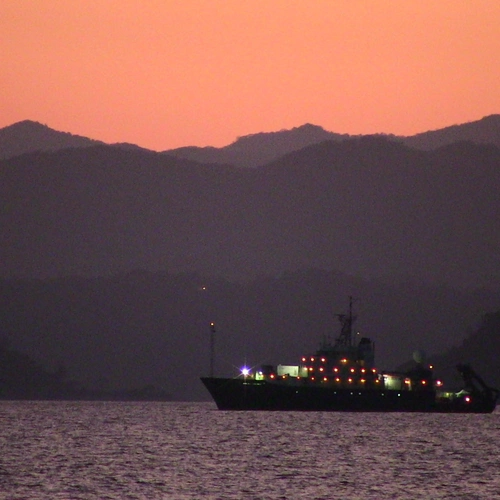
Fieldwork at sea on the Atlantis research vessel. In January 2014 Carnegie's Dionysis Foustoukos, along with microbiologist and Carnegie postdoctoral fellow Ileana Peréz-Rodríguez and under-graduate student Matt Rawls of George Mason University, collected microorganisms from the volcanoes of the Pacific Ocean and cultured them onboard the oceanographic research vessel Atlantis.
On the High Seas
In 2014, scientists from the Earth and Planets Laboratory (then Geophysical Lab), including Dr. Ileana Perez-Rodriguez and Dr. Dionysis Foustoukos participated in an ROV Jason/Medea oceanographic expedition at the deep-sea hydrothermal vent sites of East Pacific Rise.
Learn moreMedia & Video
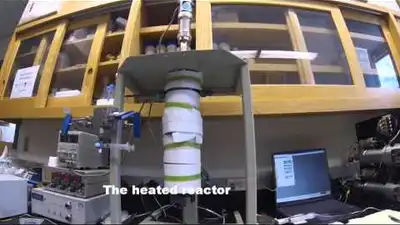
High-pressure microbiology: a CIS and RU collaboration
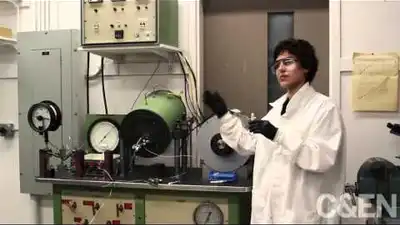
Growing Microbes Under Pressure
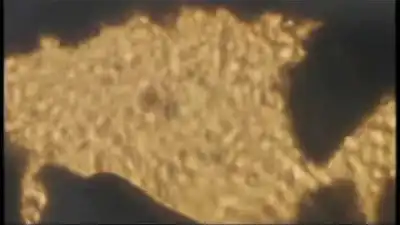
Phase separation of MgCl2-bearing aqueous fluids
